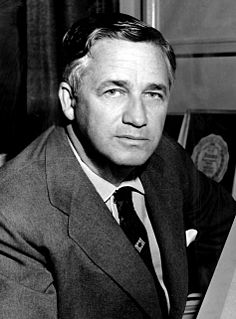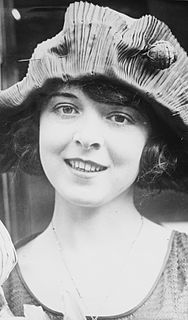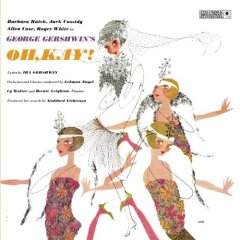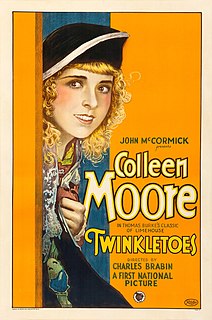
Mervyn LeRoy was an American film director and producer. In his youth he played juvenile roles in vaudeville and silent film comedies.

Colleen Moore was an American film actress who began her career during the silent film era. Moore became one of the most fashionable stars of the era and helped popularize the bobbed haircut.

Oh, Kay! is a musical with music by George Gershwin, lyrics by Ira Gershwin, and a book by Guy Bolton and P. G. Wodehouse. It is based on the play La Présidente by Maurice Hennequin and Pierre Veber. The plot revolves around the adventures of the Duke of Durham and his sister, Lady Kay, English bootleggers in Prohibition Era America. Kay finds herself falling in love with a man who seems unavailable. The show is remembered for its enduring song, "Someone to Watch Over Me".

Julanne Johnston was an American silent film actress.

"Someone to Watch Over Me" is a 1926 song composed by George Gershwin with lyrics by Ira Gershwin, assisted by Howard Dietz who penned the title. It was written for the musical Oh, Kay! (1926), with the part originally sung on Broadway by English actress Gertrude Lawrence while holding a rag doll in a sentimental solo scene. The musical ran for more than 200 performances in New York and then saw equivalent acclaim in London in 1927, all with the song as its centerpiece. Lawrence released the song as a medium-tempo single which rose to #2 on the charts in 1927.

Edna Murphy was an American actress of the silent era. She appeared in 80 films between 1918 and 1933. Murphy was voted "Most Photographed Movie Star of 1925" by ScreenLand Magazine.

Nice Work If You Can Get It is a musical featuring songs by George and Ira Gershwin, with a book written by Joe DiPietro, and based on material by Guy Bolton and P. G. Wodehouse. Nice Work premiered on Broadway in April 2012.

Her Wild Oat (1927) is a silent comedy film made by First National Pictures, directed by Marshall Neilan, and starring Colleen Moore. The screenplay was written by Gerald C. Duffy, based on a story by Howard Irving Young.

Footlights and Fools is a 1929 American pre-Code film directed by William A. Seiter that was billed by Warner Brothers as an all-talking musical film and released in Vitaphone with Technicolor sequences.

Smiling Irish Eyes (1929) is a Vitaphone American pre-Code musical film with Technicolor sequences. The film is now considered a lost film. However, the Vitaphone discs still exist.

Irene is a 1926 American silent romantic comedy film starring Colleen Moore, and partially shot in Technicolor. The film was directed by Alfred E. Green, produced by Moore's husband John McCormick, and based on the musical Irene written by James Montgomery with music and lyrics by Harry Tierney and Joseph McCarthy.

The Scarlet Letter is a 1934 American film directed by Robert G. Vignola and based on the 1850 novel of the same name by Nathaniel Hawthorne.

Lilac Time is a 1928 American silent romantic war film directed by George Fitzmaurice and starring Colleen Moore and Gary Cooper. The film is about young American aviators fighting for Britain during World War I who are billeted in a field next to a farmhouse in France. The daughter who lives on the farm meets one of the new aviators who is attracted to her. As the flyers head off on a mission, the young aviator promises to return to her.

We Moderns is a 1925 American silent comedy film directed by John Francis Dillon and starring Colleen Moore. The film was produced by Moore's husband John McCormick and was released through First National Pictures. It was based on the play and novel by Israel Zangwill. The play ran for 22 performances in 1924 at the Gaiety Theatre in New York, produced and directed by Harrison Grey Fiske and starring Helen Hayes and Isabel Irving.

Orchids and Ermine is a 1927 silent film comedy starring Colleen Moore, filmed partly on location in New York. The film still exists. This was Mickey Rooney's first feature-length film.

Twinkletoes is a 1926 American silent romantic drama film directed by Charles Brabin and starring Colleen Moore. The film, as with most of Moore's vehicles at this time, was produced by her husband John McCormick with the couple distributing through Moore's resident studio First National. This film is one of Moore's surviving films from the late silent era and is available on DVD.

Ella Cinders is a 1926 American silent comedy film directed by Alfred E. Green, starring Colleen Moore, produced by her husband John McCormick, and featuring Moore's recurring co-star, Lloyd Hughes. The film is based on the syndicated comic strip of the same name by William M. Conselman and Charles Plumb, which in turn was based upon the millennia-old folk tale of Cinderella.

John McCormick was an American film producer associated with the Hollywood studio First National Pictures.

Sally is a 1925 American silent romantic comedy film starring Colleen Moore. The film was directed by Alfred E. Green, produced by Moore's husband John McCormick, and based on the musical Sally written by Guy Bolton and Clifford Grey that was adapted to film by June Mathis. The play was a Florenz Ziegfeld Jr. production written specifically for Marilyn Miller that opened on December 21, 1920, at the New Amsterdam Theatre on Broadway. It ran for 570 performances.

Happiness Ahead is a lost 1928 silent film drama directed by William A. Seiter and starring Colleen Moore and then husband and wife Edmund Lowe and Lilyan Tashman. It was produced by First National before it acquired by Warner Brothers. Moore was married to the producer John McCormick who frequently produced her films and they held rights to their films. Moore donated copies of her films to the Museum of Modern Art (MOMA) and over the years the archive allowed the films to decay including Happiness Ahead.




















